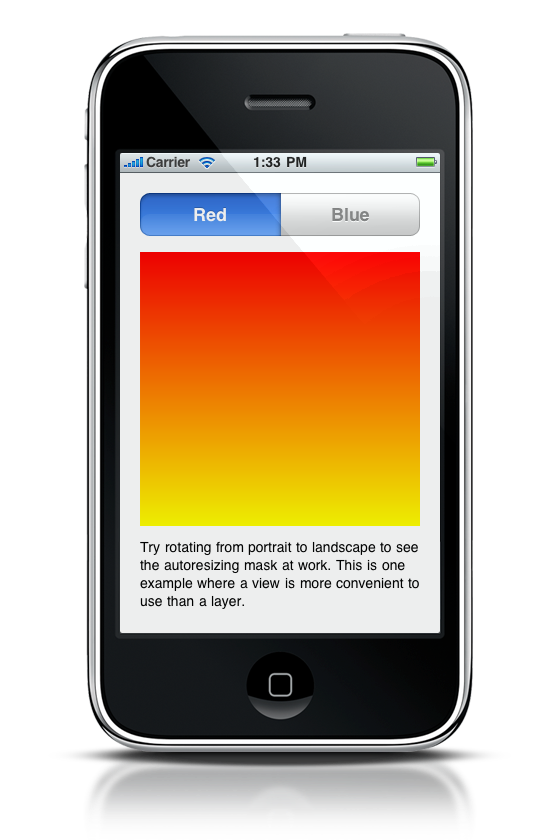CAGradientLayer is the simplest way to display gradients on the iPhone. And while Core Animation layers are simple enough to use, I repeatedly find myself missing the ability to simply add a gradient directly to a view (as a replacement for its background color) without having to write the code to manually add a CAGradientLayer to the view. So I wrote a little class that does just that.
OBGradientView is a very simple UIView subclass that wraps the functionality of CAGradientLayer in a view. It exposes all of the layer’s gradient-related properties (colors, locations, startPoint, endPoint, and type) as its own properties. Calls of the setters and getters are simply forwarded to the underlying CAGradientLayer so you can use the same syntax to define the gradient. In addition, to make it more UIKit-friendly, OBGradientView allows you to set the colors property with an array of UIColor instances instead of CGColorRefs.
Dealing with a view instead of a Core Animation layer is especially useful when you want to use autoresizing masks, which are not available for CALayer on the iPhone. For example, adding a subtle background gradient to your view controller’s main view that autoresizes automatically is very simple:
OBGradientView *backgroundView = [[OBGradientView alloc] initWithFrame:self.view.bounds];
backgroundView.colors = [NSArray arrayWithObjects:
[UIColor lightGrayColor],
[UIColor darkGrayColor],
nil];
backgroundView.autoresizingMask = UIViewAutoresizingFlexibleWidth |
UIViewAutoresizingFlexibleHeight;
Get the code for OBGradientView from GitHub. I am releasing it under the MIT License.
